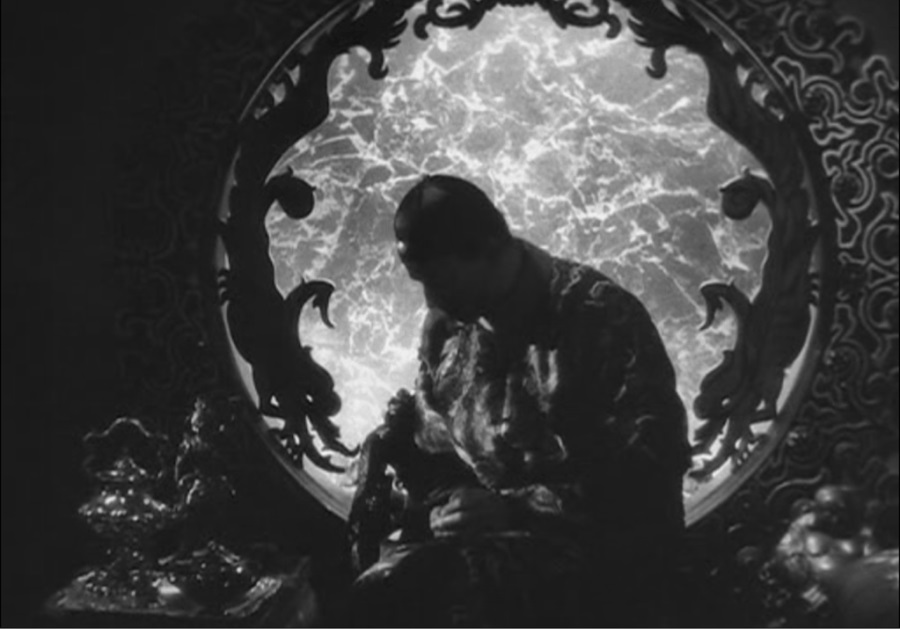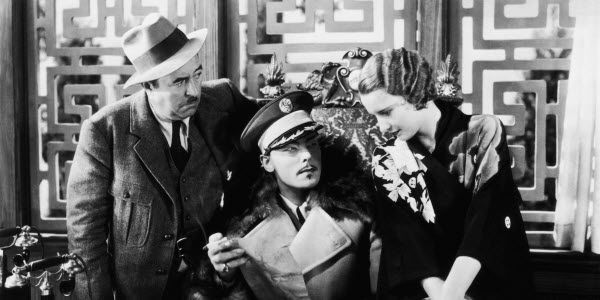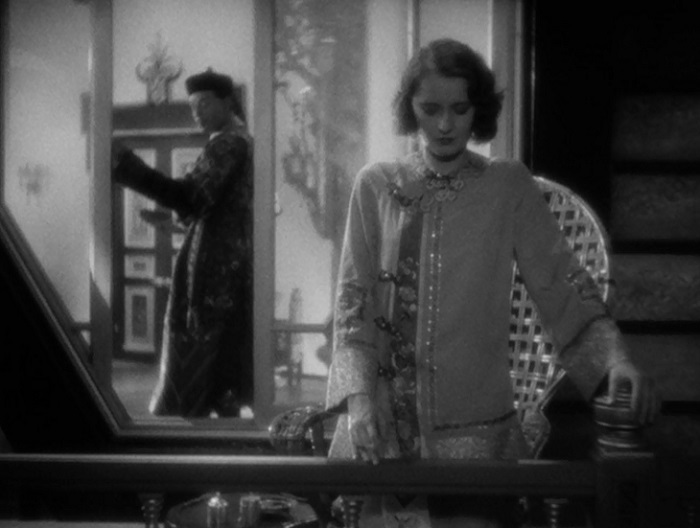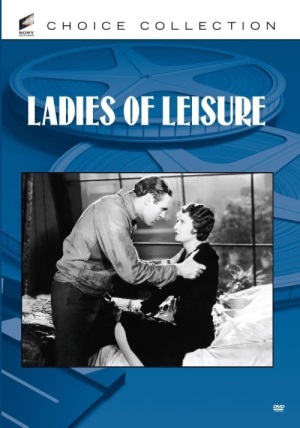 The Bitter Tea of General Yen (Sony Pictures Choice Collection)
The Bitter Tea of General Yen (Sony Pictures Choice Collection)
The Miracle Woman (Sony Pictures Choice Collection)
Ladies of Leisure (Sony Pictures Choice Collection)
Frank Capra was the closest thing to a star director that Columbia Pictures, a minor studio in the shadow of Hollywood’s big five, had going for it as it moved into the sound era. Studio head Harry Cohn made his respect for the director clear when he gave him the screen credit “A Frank Capra Production” on the 1928 film Say it With Sables and other studios were taking notice, but at the dawn of the talkies Capra was still looking to really make his name in the business. He made it with the help of another rising star of the thirties: Barbara Stanwyck, a Broadway star still looking for a film role to showcase her talent.
Ladies of Leisure (1930) was Capra’s first film of the new decade and his first collaboration with Stanwyck, who almost lost the opportunity when she blew the interview with Capra. Thankfully for all concerned, a look at her studio screen tests changed his mind and he cast her in the adaptation of the 1924 play Ladies of the Evening by screenwriter Jo Swerling, a New York playwright brought to Hollywood by Harry Cohn.
Stanwyck is Kay Arnold, a “party girl,” by her own definition. Her racket is simple: she gets called when rich men need to fill a lavish party with pretty young women. Ralph Graves is Jerry Strong, the high society son of a railroad titan and former politician (he calls his father “Governor,” never “Dad”) trying to make a career as a painter… from the cushy environs of a lavish penthouse apartment that is generally filled with ne’er do well revelers. Of course, this cynical, streetwise girl falls for the idealistic lug while his status-conscious parents try to buy her off. It’s all very pre-code, with Capra making it clear that, however much the script whitewashes her “career,” she is unmistakably a lady of the evening, and one very used to beating off the advances of privileged men with money. Swerling penned a script filled with smart and sophisticated dialogue and Stanwyck delivered it was brass. The rest of it isn’t quite as dynamic, thanks to the wooden and stiff performance by Capra buddy Graves and the creaky melodrama of the social clash story.
Most importantly, Capra had finally found what would become the bedrock themes of his most memorable films: the plight of everyday Americans in the face of power and money and social censure. It’s rather obviously played out here and leading man Graves is a soggy firecracker next to the shooting star of Stanwyck, but the film crackles when she’s on screen, whether she’s sparring with Nance O’Neil (almost heartbreaking as Jerry’s oh-so-practical society matron of a mother), trading quips with Marie Prevost (as her happy-go-lucky roommate) or simply staring dreamily up at the stars, radiating for a few brief moments the unguarded hope and optimism that such a streetwise tough cookie dare not reveal. It was the first of five films they would make together, and of even more that Capra would make with screenwriter Swerling.
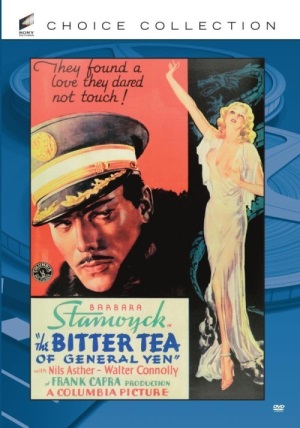 The Bitter Tea of General Yen (1933) is the peak of Capra’s work with Stanwyck, an exotic drama set in China. Stanwyck as Megan Davis, a New York society girl with a heart of gold and a backbone of steel who comes East to marry her betrothed, Dr. Robert ‘Bob’ Strike (Gavin Gordon), scion of a wealthy American family who chooses missionary work over the family business. When he delays the wedding for a humanitarian mission to save orphans from town under fire in a raging civil war, she strikes out with him and ends up trapped behind enemy lines, rescued by the titular General Yen (Nils Asther), a western-educated warlord with an American advisor (Walter Connolly) helping him wring every last yen from his territory while he hangs on to power.
The Bitter Tea of General Yen (1933) is the peak of Capra’s work with Stanwyck, an exotic drama set in China. Stanwyck as Megan Davis, a New York society girl with a heart of gold and a backbone of steel who comes East to marry her betrothed, Dr. Robert ‘Bob’ Strike (Gavin Gordon), scion of a wealthy American family who chooses missionary work over the family business. When he delays the wedding for a humanitarian mission to save orphans from town under fire in a raging civil war, she strikes out with him and ends up trapped behind enemy lines, rescued by the titular General Yen (Nils Asther), a western-educated warlord with an American advisor (Walter Connolly) helping him wring every last yen from his territory while he hangs on to power.
Swerling doesn’t script this one (Edward Paramore adapts the story by Grace Zaring Stone) and the tone and style is very different. It could be Capra’s answer to Paramount glamour and von Sternberg exoticism. Of course, his leading lady is a missionary, but she nonetheless falls in love with a ruthless, Chinese warlord with great manners and no regard for human life at the lower rungs of society. And true to the times, Yen is played by a Caucasian in make-up and eye-lifts. This insensitive and objectionable tradition was common all the way through the forties and used whenever there is a suggestion of a love story between a Caucasian woman and a man from another race (and usually the other direction too, though apparently it’s okay for white men to make love to women of other races).
Given that sorry tradition, the Danish-born Asther is superb in the role, a complicated mix of Western education and Eastern philosophy, a master of diplomacy, a deal maker, and a man obsessed with Megan’s selflessness and sacrifice as well as her beauty. He’s a darkly romantic precursor to Prince Prospero, the cruel character played by Vincent Price in Roger Corman’s The Masque of the Red Death (1964). Not that he’s wicked so much as mercenary and Machiavellian, but he’s nonetheless determined to “school” this naïve westerner in the true nature of life outside of the safety of high society while he keeps her close. He’s not going to ravish her, the threat that defines so many of these exotic tales of white women in Asia, but he clearly desires her and defies his own instincts to impress her. He doesn’t want to conquer her, he wants to win her. Capra creates a marvelous and complicated love story between the two without allowing so much a kiss to be shared between them. He communicates intimacy and emotion in other ways, but the mutual attraction and fascination is unmistakable.
For all the blithe racism in the portraits of Chinese society and the stereotypes within, Capra isn’t shy about acknowledging the racism from the American colonials. The Strike family has carved out an oasis of western culture in the middle of Shanghai, the better to keep their distance from the yellow devils. The mother’s comments capture the American / British attitude: “They’re all tricky, treacherous and immoral. I can’t tell one from the other. They’re all Chinamen to me.” And Yen, for all his ruthlessness, is less objectionable than the ostensibly “cultured” Jones, a man as corrupt as any of Capra’s big capital villains. If Yen is the product of a culture of warlords, Jones is something between a corporate power broker and a mob boss in the wild East working under the protection of his territorial Godfather Yen.
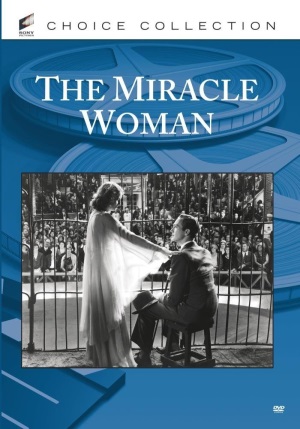 Between these films they also made The Miracle Woman (1931), Capra’s second collaboration with Stanwyck and fourth with Swerling. It features Stanwyck as a barnstorming preacher (modeled on real life figure Amee Semple McPherson) who teams with a con man (Hornsby) to turn her gift into a big business. It’s an early instance of Capra’s suspicions of manipulation of the public for profit (which came back in secular form in Meet John Doe) and his insistence on the responsibility of business and media to the American community, but it’s not all cynicism as Stanwyck’s Florence Fallon rediscovers her faith through the love of a blind man (David Manners).
Between these films they also made The Miracle Woman (1931), Capra’s second collaboration with Stanwyck and fourth with Swerling. It features Stanwyck as a barnstorming preacher (modeled on real life figure Amee Semple McPherson) who teams with a con man (Hornsby) to turn her gift into a big business. It’s an early instance of Capra’s suspicions of manipulation of the public for profit (which came back in secular form in Meet John Doe) and his insistence on the responsibility of business and media to the American community, but it’s not all cynicism as Stanwyck’s Florence Fallon rediscovers her faith through the love of a blind man (David Manners).
In his autobiography, Capra wrote: “Miss Stanwyck is a natural actress. A primitive emotional. I let her play herself, no one else.” She made five films in all with Capra, the last one in 1941: Meet John Doe. Jo Swerling penned half-dozen screenplays for Capra in the thirties before going on to write hits like Blood and Sand (1941), Pride of the Yankees (1942) and Leave Her to Heaven (1942).
All of these are DVD-R releases, no-frills discs from studio masters, ordered online and “burned” individually with every order. They are also available in the five-film box set Frank Capra: The Early Collection from TCM Vault Collection through the TCM website. That set also includes the Capra-Swerling-Stanwyck collaboration Forbidden (1932) and the Swerling-penned Rain or Shine (1930).
Sony Pictures Choice Collection releases are available by order from Amazon, Critics Choice Video, Classic Movies Now, Warner Archive, and other web retailers.
Calendar of upcoming releases on Blu-ray, DVD, Digital, and VOD

